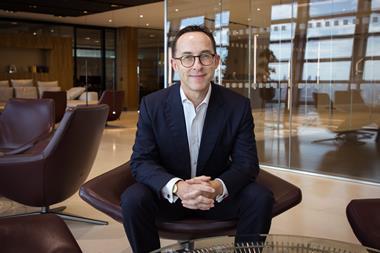Glyn Brookes-Humphrey, director of operations for the North at Woodgate and Clark, discusses how the industry can better prepare for claim surges

What can be categorised as a surge event?
An event becomes a surge when the new claims intake is beyond the resources of local/allocated staff to manage and support is needed from the wider business. It’s all to do with claim volumes and for how long they remain in an elevated state.
Surge events are far from a new phenomenon, but with predictions of increasing extreme weather events, the market and their loss adjusting partners must always be ready to respond when a claims surge occurs.
Over the past couple of years, we have seen surge events in the volume of subsidence claims as an outcome of the record-breaking temperatures experienced in the heatwave of Summer 2022. Going to the other extreme, by December 2022, the UK was experiencing severe flooding and freezes, then we had a very dry Summer creating the risk of wildfires.
Coming right up to date, there has been a succession of storms, with the latest figures from the ABI showing that 48,700 claims were notified for storms Babet, Ciaran and Debi.
How can the insurance industry better prepare for the increasing frequency of such events?
There is a need for the industry to work more collaboratively – both from a resilience perspective, but also from a ‘rainy day’ perspective. All parties need to understand that they will only have the adjusting experience and expertise that insurers and their customers expect in often traumatic circumstances if they support that resource during non-surge periods.
Adjusters can maintain realistic levels of support and cover if they are provided with the right levels of work during periods of ‘business as usual’.
How are loss adjusters responding to the changing dynamics in a surge?
With the dynamic of surge events altering, the key way the loss adjusting profession can continue to ensure it responds with speed and agility when the unexpected increasingly occurs is through investing in developing the skills and experience of its people. This should start from the very beginning of their loss adjusting careers. Every situation is unique, which means only so much can be learned from the desk.
Read: Loss adjusters a ‘fourth emergency service’ for customers in time of need
Read: Woodgate and Clark buys specialist media and entertainment adjuster
Explore more claims-related stories here or discover news content here
We need to give people exposure to larger, more complex losses out of surge, learning from real-life situations on the ground and giving them access to mentors and the support of their peers.
In this way, we can ensure all of our adjusting staff have the right experience and levels of support to handle the types of claim surge and in doing so, build our own internal resilience.
How are you tackling recruitment challenges facing the loss adjusting sector?
Along with the rest of the insurance sector, the loss adjusting sector is facing recruitment challenges, with around 5% of senior adjusters retiring each year. Therefore, investing in people and helping them to progress in their careers as far as they want to go is vital.
Fundamentally, all of our adjusters have the experience and support required to step up and handle claims in a surge event. We do this by providing each adjuster with an experienced mentor to advise and guide them on a day-to-day basis. Professional qualifications are also essential. Gaining qualifications with support from us in the form of time off from work for study and exams gives our adjusters confidence, credibility and respect from industry peers. With these qualifications under their belts, adjusters can then gain access to our Major Loss Pathway.
Our Major Loss Pathway offers training and exposure to larger, more complex losses supported by their mentor. This gives them the experience and confidence to handle the larger claims that surge events tend to bring. In the same way, we are coaching and upskilling our desk-based support teams so that they can assist with visit activity to support the field adjusters in times of surge.
What was the last big surge event you dealt with and were there any lessons that could be learned from this?
We always want to learn from surge events – the last significant one of which was from the freezing temperatures in December 2022. This was a national surge, which brings a different set of challenges to a more localised event. I am proud to say that our response was strong and we were able to contact and visit all customers quickly and effectively using teams across the UK. We learned of the need to continue our investment in developing the next generation of loss adjusters.












































No comments yet